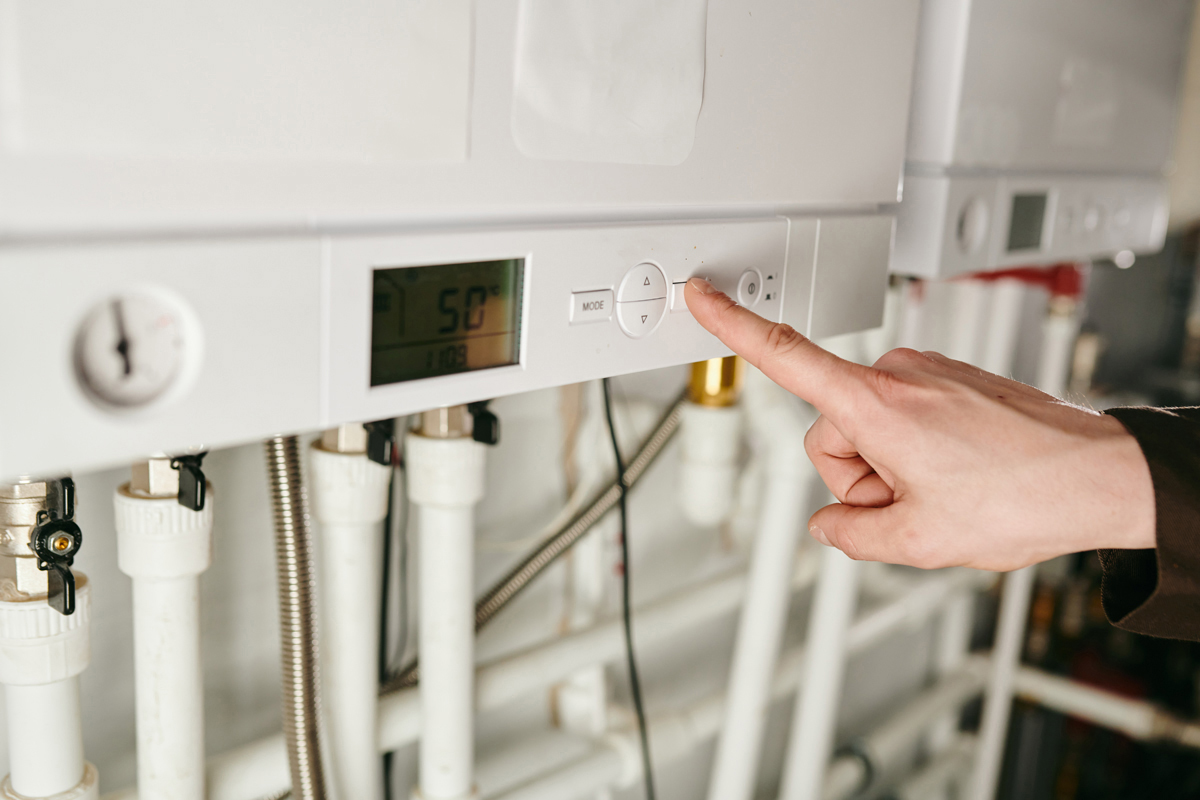
In addition to cooling the inside of your home, your air conditioning system is responsible for removing humidity from the air. This dehumidification process collects water vapor from the interior air and sends it outdoors through a drain line that’s attached to the AC. In order to properly function, the drain line needs to remain free of any obstructions. Learn how to unclog the AC drain line below.
How To Tell If Your AC Drain Line Is Clogged
The most common signs that your drain line is clogged include the following:
- AC system is leaking water.
- AC smells musty.
- AC refuses to turn on.
- The drip pan is filled with water.
If the AC drain line is clogged, condensation from the standing water can leak from your pipes, resulting in water damage and an unpleasant smell in your home. If the clog worsens, the standing water will begin to accumulate in the drip pan.
If the water reaches a certain level, a safety sensor (a float switch) will turn your AC off entirely. This will prevent the water from overflowing from the top of the pan and causing more damage to the system. Your AC will not turn on again until the water drains completely.
How To Unclog The Drain Line
You can attempt to perform some DIY maintenance if your drain line appears to be clogged. For this task, you will need the following materials on hand:
- Duct tape.
- Vinegar.
- Garden hose.
- Wet/dry vacuum.
Follow this step-by-step guide to properly unclog the drain line.
Step 1. Turn Off The AC
- The first step is to turn off the AC system at the thermostat and breaker or disconnect/shut-off box to be safe.
- This will protect you and your AC system.
Step 2. Find The Drain Line
- The drain line is a white, T-shaped PVC pipe.
- It is typically located in a utility closet, attic, or garage.
- It may be hidden by a removable access panel, depending on the system.
- Follow the PVC pipe and locate where the drain line exits your home.
- Ensure that it is not obstructed by any debris or dirt.
- If you are unable to follow the drain line, look near the AC condenser, which is the outside component of the system.
Step 3. Remove Any Debris
- Skip to the next step if you do not have a wet/dry vacuum.
- If you do have a wet/dry vacuum, you can attempt to remove the clog by attaching the vacuum to the end of the drain line.
- Turn the vacuum on for about one minute to suck out whatever has created the clog and excess water in the line.
- Typically, this is all you’ll need to do to clear most clogs.
- Follow the next few steps to ultimately complete the process.
Step 4. Use A Hose To Clear The Drain Line
- Locate the point of access on your drain line, which is typically a T-shaped piece with a cap on it.
- Remove this cap and wedge the hose into the drain line.
- Ensure the water flows down the drain line and not back into your AC system.
Step 5. Clean The Drain Line And Replace The Cap
- Once the drain line is clear, clean the line by pouring a cup of vinegar down the drain.
- Feel free to use a little more than a cup, if necessary.
- Vinegar can kill mold, algae, and other bacteria.
- You can repeat this process monthly in an effort to prevent clogs.
- Now replace the cap back on your drain line.
- Turn the AC system back on at the breaker or disconnect/shut-off box, then at the thermostat, as well.
Cascade Mechanical HVAC Services In Tempe, AZ
Need commercial AC repair in Phoenix Arizona? Call Cascade Mechanical, Inc. at 602-233-3265. We offer complete commercial HVAC services like chiller tube repair cooling towers, and heat exchangers to Scottsdale, Phoenix, Mesa, Gilbert, Chandler Arizona and more!





